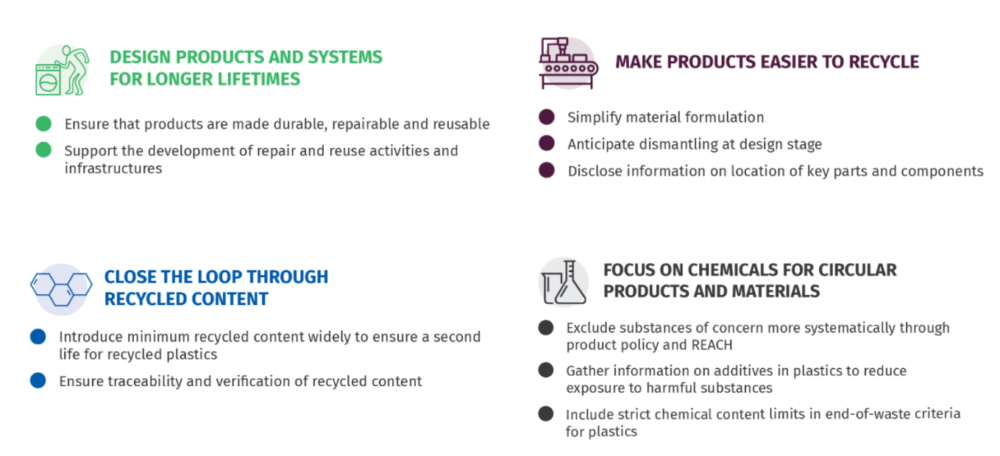Reduce, reuse, redesign – what place for plastic in a circular economy?
In 2019 more than ever, our work aimed to raise the bar on plastics, from integrating ecodesign principles to limiting microplastic pollution. Our influential report put ecodesign for plastic on the political agenda, while the new tyre label will allow consumers to choose tyres that shed less microplastic pollution into our environment.

It is crucial to rethink the place of plastic in our society. It is no longer about being slightly less environmentally damaging – it is about fundamentally and comprehensively reshaping existing policies and standards.
Reduce, reuse, redesign – plastic in a circular economy
The way we currently design, produce, consume and dispose of plastic is highly unsustainable and inefficient. While the industry players focus on how to best recycle the unnecessarily complex waste, in 2019 we decided to ask the less convenient question: are our production and consumption models sustainable? What is the place for plastic in a circular economy?
We strongly believe that, in order to minimise the environmental footprint of one of the most widely used materials, plastic requires a comprehensive ecodesign approach. This has already proven highly effective for energy-related products regulated under the Ecodesign Directive, but we think that it would not be difficult to apply these principles in other sectors, too.
In June 2019, ECOS published a comprehensive report, based on a background study from research organisations VITO & Ökopol, entitled “For better not worse: Applying Ecodesign Principles to Plastic in a Circular Economy”. The publication explores how to integrate environmentally sound design requirements in EU policy and legislation relevant to plastics. Our publication puts forward four concise and ambitious recommendations to decision makers:

The report, accompanied by an interactive online infographic and a printed visual summary, was presented at our Annual Conference in June 2019. In his keynote speech, Kestutis Sadauskas, the Director for Circular Economy and Green Growth at the European Commission’s Directorate General for Environment, highlighted the timeliness and relevance of the report, which he referred to as a guidance for his team.
The subsequent European Green Deal confirms the European Commission’s willingness to introduce a sustainable product policy framework including through the expansion of ecodesign to other legislation for more durable, repairable, reusable and recyclable products. Thanks to our work, an ecodesign approach for plastic products is now widely discussed.
A tyre label that helps protect the environment from microplastics
The tyre label is a good example of how something rather small can set the basis for a substantial difference.
Tyres are the main contributor of unintentional microplastics release into the environment, leading to 250,000 to 500,000 tonnes of microplastics pollution every year in the EU. Environmental organisations, including ECOS, have long argued that consumers should be better informed about the damaging impact of tyres, so that they can make better choices.
Finally, in December 2019, as a result of many discussions, the EU institutions agreed on a pioneering first step towards addressing microplastics released from tyre wear and tear. The revised tyre label will soon feature information on abrasion, which, in turn, will help consumers choose tyres that shed less microplastic, as well as stimulate innovation towards improved tyre design and treading.
To make all of this possible, the European Commission will need to request the development of standardised methods to measure tyre abrasion, which, we strongly believe, should be done as soon as possible.
This is a success not only for ECOS but also the environmental groups from the Rethink Plastic alliance and the wider Break Free From Plastic movement, who had called for the inclusion of this parameter in the label for a long time.
It is important to remember that these are just first steps in tackling this major source of microplastics pollution. Tyre wear and micro-rubber particle emissions require a consolidated response from all relevant stakeholders, including tyre manufacturers, road surface producers, municipalities, waste-water treatment plants, and consumer and healthcare NGOs. Our work is most certainly not done, but we are here to make sure both the EU and relevant national authorities to adopt a set of coordinated policy measures, so that we can safely say that we are no longer #tyredofmicroplastics!


